This pub was opened as a lecture hall on the day before the coronation of King George V, on 21 June 1911, and named in honour of the new king. It later became a cinema and then a bingo hall.
Prints and text about The Coronation Hall.
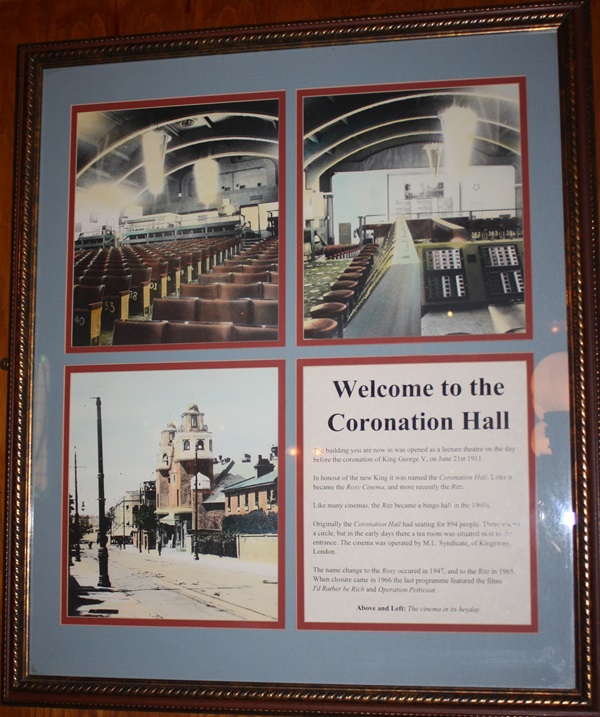
The text reads: The building you are now in was opened as a lecture theatre on the day before the coronation of King George V, on June 21 1911.
In honour of the new King it was named the Coronation Hall. Later it became the Roxy Cinema, and more recently the Ritz.
Like many cinemas, the Ritz became a bingo hall in the 1960s.
Originally the Coronation Hall had seating for 894 people. There wasn't a circle, but in the early days there was a tea room which was situated next to the entrance. The cinema was operated by ML Syndicate, of Kingsway, London.
The name change to the Roxy occurred in 1947, and to the Ritz in 1965. When closure came in 1966 the last programme featured the films I'd Rather be Rich and Operation Petticoat
Above and Left: The cinema in its heyday.
A photograph of Coronation Hall, Surbiton, c1910.
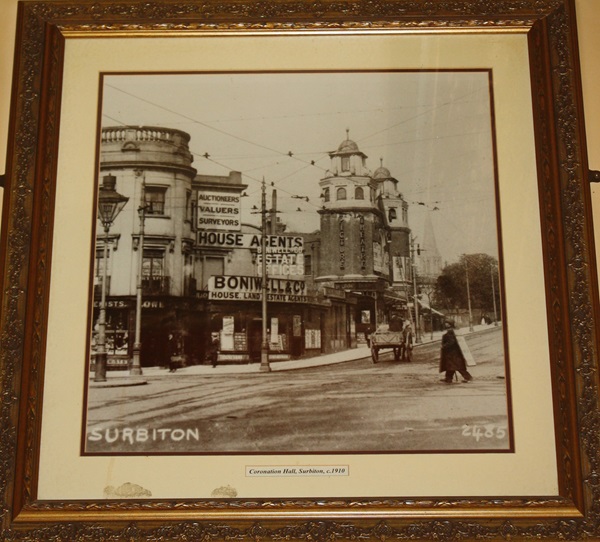
A photograph of Coronation Hall, Surbiton, c1910.
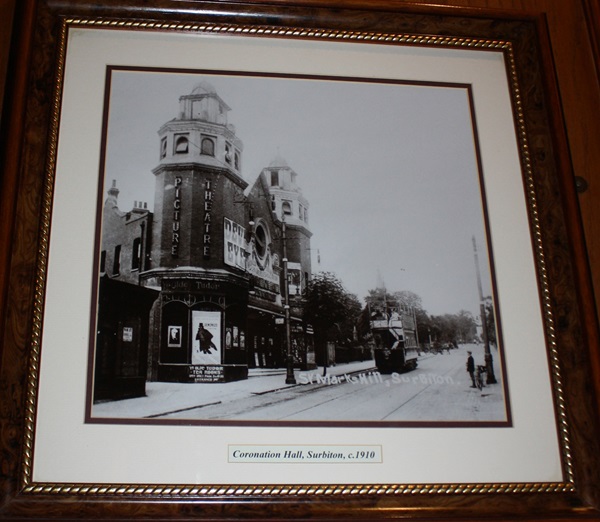
Photographs of when the building was a bingo hall.
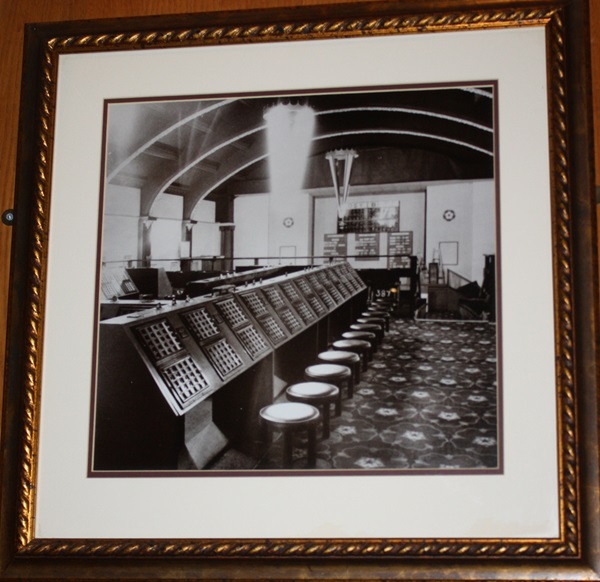
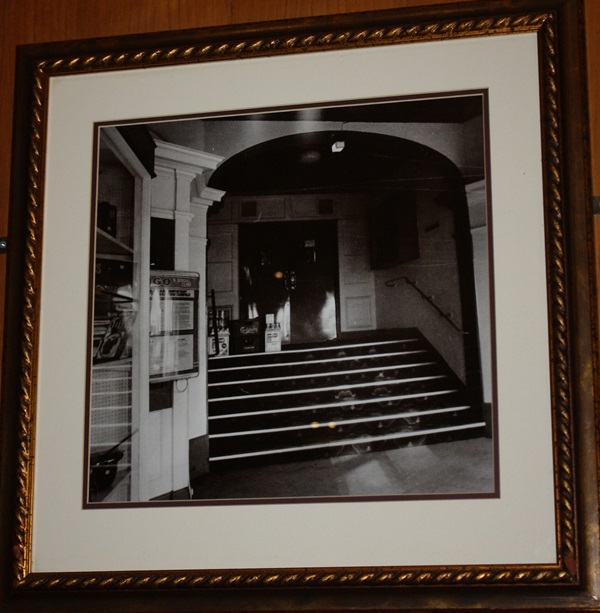
A print and text about William Bryant.
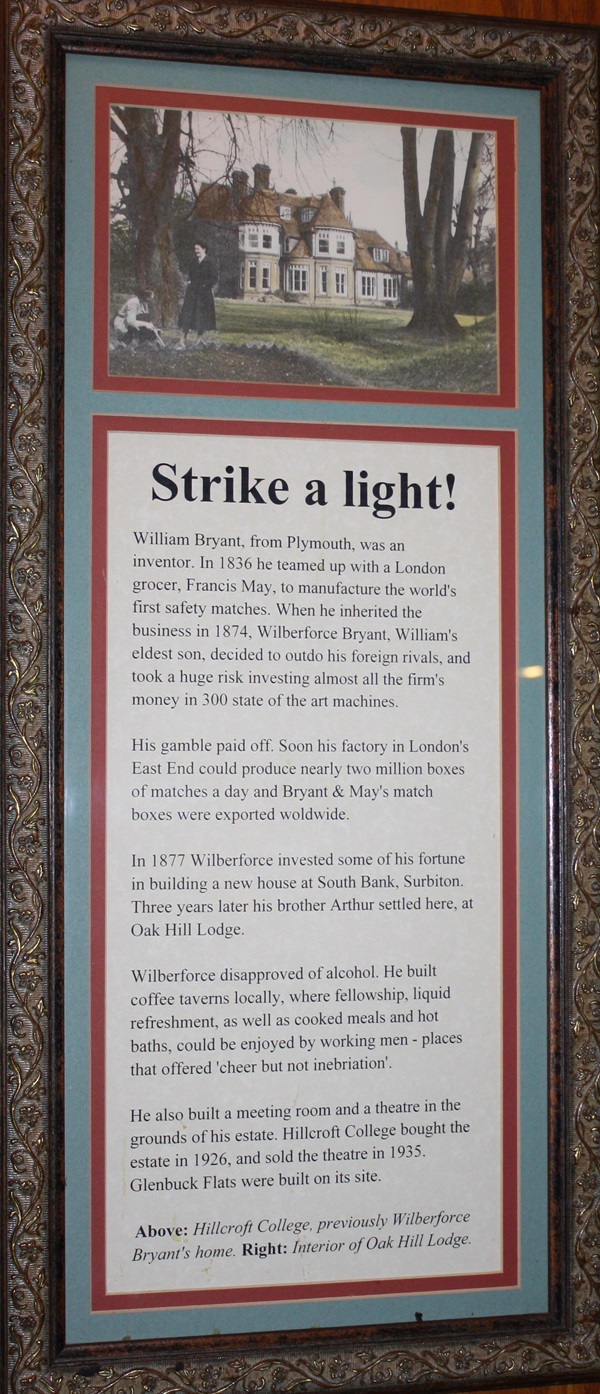
The text reads: William Bryant, from Plymouth, was an inventor. In 1836 he teamed up with a London grocer, Francis May, to manufacture the world's first safety matches. When he inherited the business in 1874, Wilberforce Bryant, William's eldest son, decided to outdo his foreign rivals, and took a huge risk investing almost all the firm's money in 300 state of the art machines.
His gamble paid off. Soon his factory in London's East End could produce nearly two million boxes of matches a day and Bryant & May's match boxes were exported worldwide.
In 1877 Wilberforce invested some of his fortune in building a new house at South Bank, Surbiton. Three years later his brother Arthur settled here, at Oak Hill Lodge.
Wilberforce disapproved of alcohol. He built coffee taverns locally, where fellowship, liquid refreshment, as well as cooked meals and hot baths, could be enjoyed by working men – places that offered "cheer but not inebriation".
He also built a meeting room and a theatre in the grounds of his estate. Hillcroft College bought the estate in 1926, and sold the theatre in 1935. Glenbuck Flats were built on its site.
Above: Hillcroft College, previously Wilberforce
Bryant's home
Right: Interior of Oak Hill Lodge.
Prints and text about Surbiton Place and Henry Paget.
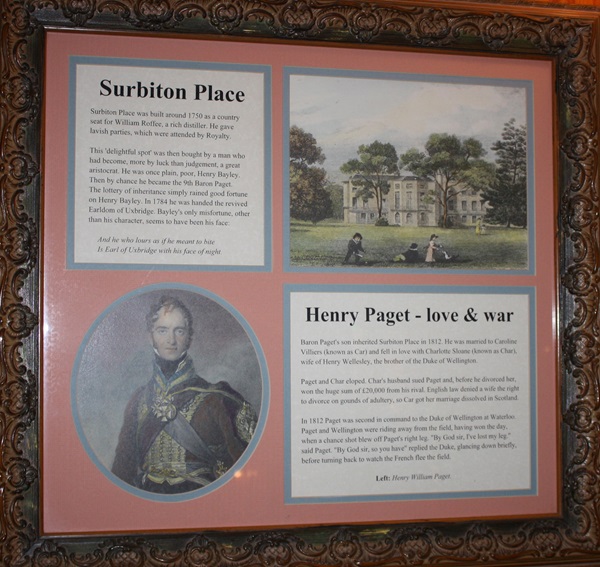
The text reads: Surbiton Place
Surbiton Place was built around 1750 as a country seat for William Roffee, a rich distiller. He gave lavish parties, which were attended by Royalty.
This 'delightful spot’ was then bought by a man who had become, more by luck than judgement, a great aristocrat. He was once plain, poor, Henry Bayley. Then by chance he became the 9th Baron Paget. The lottery of inheritance simply rained good fortune on Henry Bayley. In 1784 he was handed the revived Earldom of Uxbridge. Bayley's only misfortune, other
than his character, seems to have been his face:
And he who lours as if he meant to bite
Is Earl of Uxbridge with his face of night.
Henry Paget love & war
Baron Paget's son inherited Surbiton Place in 1812. He was married to Caroline Villiers (known as Car) and fell in love with Charlotte Sloane (known as Char), wife of Henry Wellesley, the brother of the Duke of Wellington.
Paget and Char eloped. Chars husband sued Paget and, before he divorced her, won the huge sum of £20.000 from his rival. English law denied a wife the right to divorce on grounds of adultery, so Car got her marriage dissolved in Scotland.
In 1812 Paget was second in command to the Duke of Wellington at Waterloo. Paget and Wellington were riding away from the field, having won the day, when a chance shot blew off Paget's right leg. "By God sir, l've lost my leg." said Paget. "By God sir, so you have" replied the Duke, glancing down briefly, before turning back to watch the French flee the field.
Left: Henry William Paget.
Prints and text about Thomas Hardy.
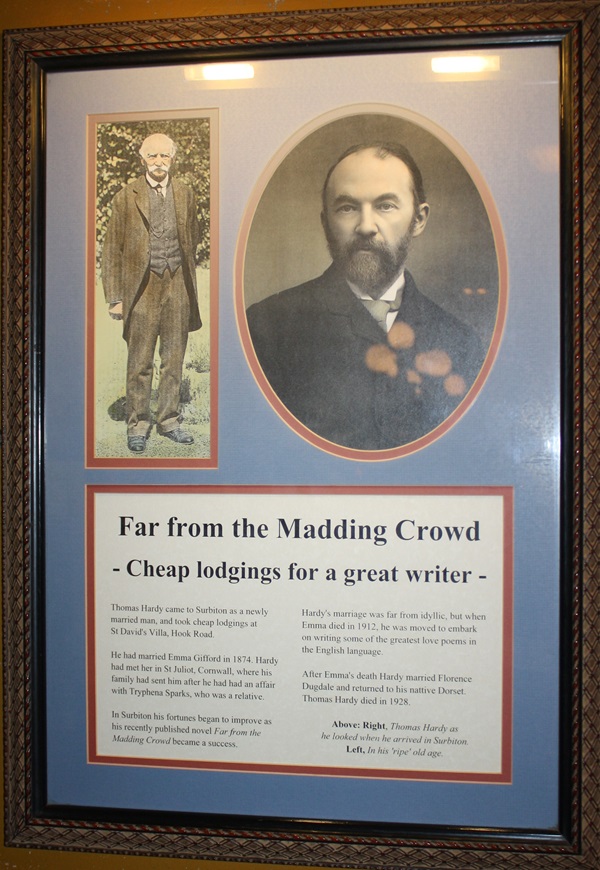
The text reads: Thomas Hardy came to Surbiton as a newly married man, and took cheap lodgings at St David's Villa, Hook Road.
He had married Emma Gifford in 1874. Hardy had met her in St Juliot, Cornwall, where his family had sent him after he had had an affair with Tryphena Sparks, who was a relative.
In Surbiton his fortunes began to improve as his recently published novel Far from the Madding Crowd became a success.
Hardy's marriage was far from idyllic, but when Emma died in 1912, he was moved to embark on writing some of the greatest love poems in the English language.
After Emma's death Hardy married Florence Dugdale and returned to his native Dorset. Thomas Hardy died in 1928.
Above: Right, Thomas Hardy as he looked when he arrived in Surbiton
Left, In his ‘ripe' old age.
Prints and text about tennis in Surbiton.
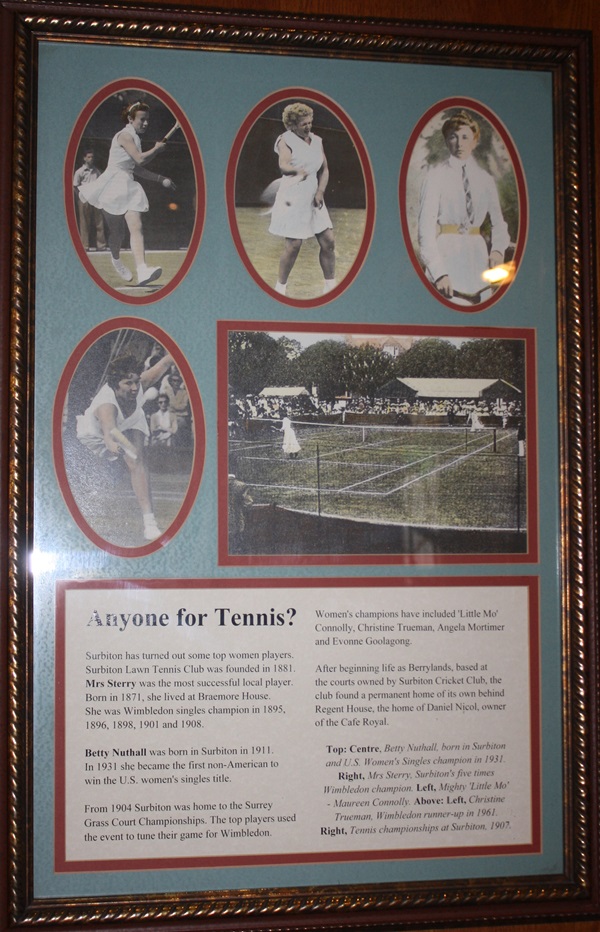
The text reads: Surbiton has turned out some top women players. Surbiton Lawn Tennis Club was founded in 1881. Mrs Sterry was the most successful local player. Born in 1871, she lived at Braemore House. She was Wimbledon singles champion in 1895, 1896, 1898, 1901 and 1908.
Betty Nuthall was born in Surbiton in 1911. In 1931 she became the first non-American to win the US women's singles title. From 1904 Surbiton was home to the Surrey Grass Court Championships. The top players used the event to tune their game for Wimbledon.
Women's champions have included "Little Mo" Connolly, Christine Trueman, Angela Mortimer and Evonne Goolagong.
After beginning life as Berrylands, based at the courts owned by Surbiton Cricket Club, the club found a permanent home of its own behind Regent House, the home of Daniel Nicol, owner of the Cafe Royal.
Top: Centre, Betty Nuthall, born in Surbiton and US Women's Singles champion in 1931
Right, Mrs Sterry, Surbiton's five times Wimbledon champion
Left, Mighty Little Mo Maureen Connolly
Above: Left, Christine Trueman, Wimbledon runner-up in 1961
Right, Tennis championships at Surbiton, 1907.
A print and text about Francis Villiers.

The text reads: As their final throw in the Civil War, a group of Royalists made a last attempt to rescue the King held prisoner on the Isle of Wight. George Villiers, the Duke of Buckingham, and his brother Lord Francis Villiers were in on the plan.
Unfortunately, Parliament forces had been warned of the rebellion. When the rebel troops reached Reigate, they were forced to turn back. Later in the day the Royalists reached Surbiton Common. Battle ensued, and the Royalists defeat was swift and total.
Earl Holland, the Commander, was accused of incompetence, and allowing his troops to be ‘decoyed into destruction', Lord Francis Villiers 'A Youth and Tender Plant of Honour' was killed when, unhorsed, he fought a dozen enemies with his back to an elm tree. His body, covered in wounds, was later embalmed and put his father’s vault Henry VII's chapel at Westminster Abbey.
Above: Francis Villiers as a boy, by Sir Anthony Van Dyck.
A print and text about St Raphaels.
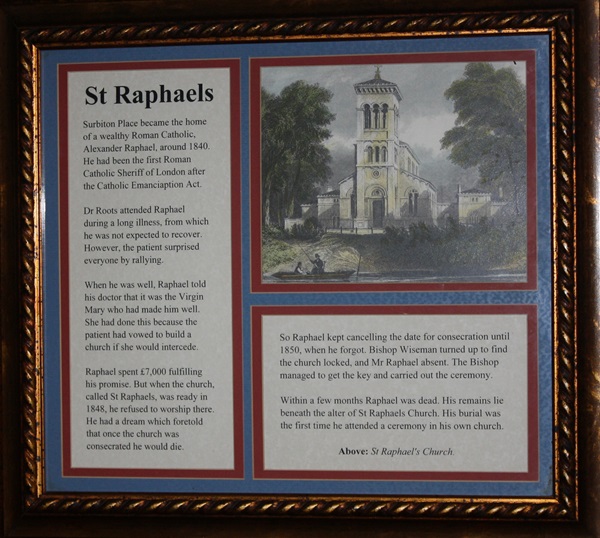
The text reads: Surbiton Place became the home of a wealthy Roman Catholic, Alexander Raphael, around 1840. He had been the first Roman Catholic Sheriff of London after the Catholic Emancipation Act.
Dr Roots attended Raphael during a long illness, from which he was not expected to recover. However, the patient surprised everyone by rallying.
When he was well, Raphael told his doctor that it was the Virgin Mary who had made him well. She had done this because the patient had vowed to build a church if she would intercede.
Raphael spent £7,000 fulfilling his promise. But when the church, called St Raphaels, was ready in 1848, he refused to worship there. He had a dream which foretold that once the church was consecrated he would die.
So Raphael kept cancelling the date for consecration until 1850, when he forgot. Bishop Wiseman turned up to find the church locked, and Mr Raphael absent. The Bishop managed to get the key and carried out the ceremony.
Within a few months Raphael was dead. His remains lie beneath the alter of St Raphaels Church. His burial was the first time he attended a ceremony in his own church.
Above: St Raphael's Church.
An illustration and text about Thomas Pooley.
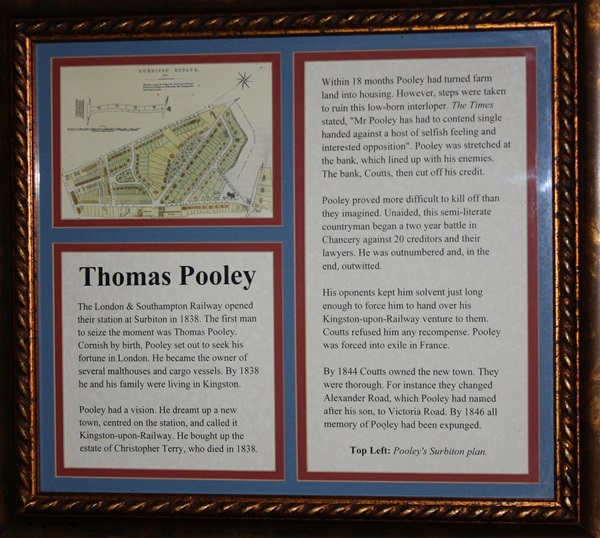
The text reads: The London & Southampton Railway opened their station at Surbiton in 1838. The first man to seize the moment was Thomas Pooley. Cornish by birth, Pooley set out to seek his fortune in London. He became the owner of several malthouses and cargo vessels. By 1838 he and his family were living in Kingston.
Pooley had a vision. He dreamt up a new town, centred on the station, and called it Kingston-upon-Railway. He bought up the estate of Christopher Terry, who died in 1838.
Within 18 months Pooley had turned farmland into housing. However, steps were taken to ruin this low-born interloper. The Times stated, "Mr Pooley has had to contend single handed against a host of selfish feeling and interested opposition". Pooley was stretched at the bank, which lined up with his enemies.
The bank, Coutts, then cut off his credit. Pooley proved more difficult to kill off than they imagined. Unaided, this semi-literate countryman began a two year battle in Chancery against 20 creditors and their lawyers. He was outnumbered and, in the end, outwitted.
His opponents kept him solvent just long enough to force him to hand over his Kingston-upon-Railway venture to them. Coutts refused him any recompense. Pooley was forced into exile in France.
By 1844 Coutts owned the new town. They were thorough. For instance they changed Alexander Road, which Pooley had named after his son, to Victoria Road. By 1846 all memory of Pooley had been expunged.
Top Left: Pooley's Surbiton plan.
Prints and text about Phyllis Dixey.
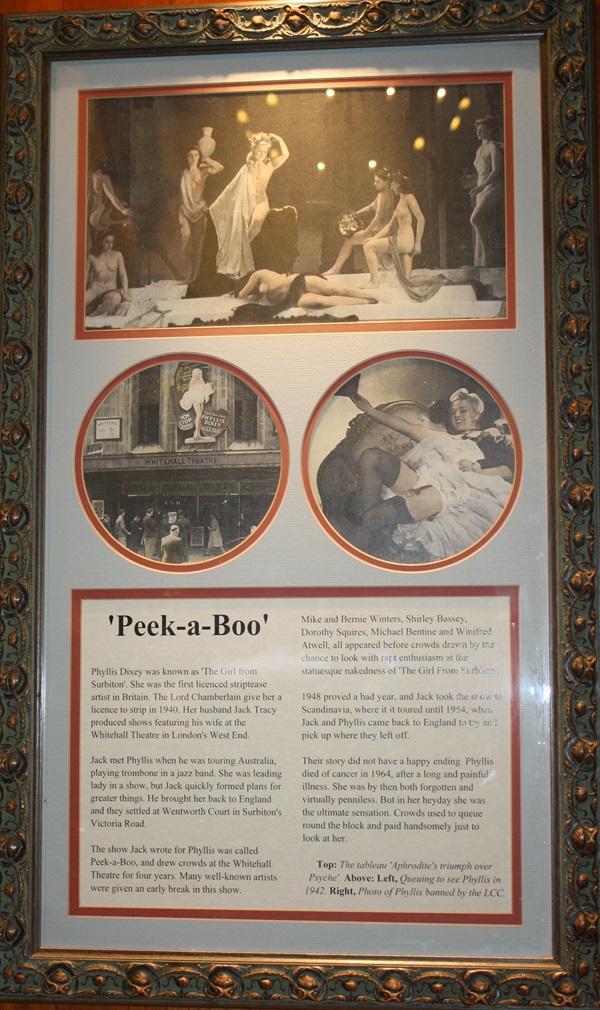
The text reads: Phyllis Dixey was known as ‘The Girl from Surbiton’. She was the first licenced striptease artist in Britain. The Lord Chamberlain gave her a licence to strip in 1940. Her husband Jack Tracy produced shows featuring his wife at the Whitehall Theatre in London's West End.
Jack met Phyllis when he was touring Australia playing trombone in a jazz band. She was leading lady in a show, but Jack quickly formed plans for greater things. He brought her back to England and they settled at Wentworth Court in Surbiton's Victoria Road.
The show Jack wrote for Phyllis was called Peek-a-Boo, and drew crowds at the Whitehall Theatre for four years. Many well-known artists were given an early break in this show.
Mike and Bernie Winters, Shirley Bassey, Dorothy Squires, Michael Bentine and Winifred Atwell, all appeared before crowds drawn by the chance to look with rapt enthusiasm at the statuesque nakedness of ‘The Girl From Surbiton’.
1948 proved a bad year, and Jack took the show to Scandinavia, where it toured until 1954, when Jack and Phyllis came back to England to try and pick up where they left off.
Their story did not have a happy ending. Phyllis died of cancer in 1964, after a long and painful illness. She was by then both forgotten and virtually penniless. But in her heyday she was the ultimate sensation. Crowds used to queue round the block and paid handsomely just to look at her.
Top: The tableau ‘Aphrodite's triumph over Psyche’
Above: Left, Queuing to see Phyllis in 1942. Right, Photo of Phyllis banned by the LCC.
A print and text about William Thackeray.
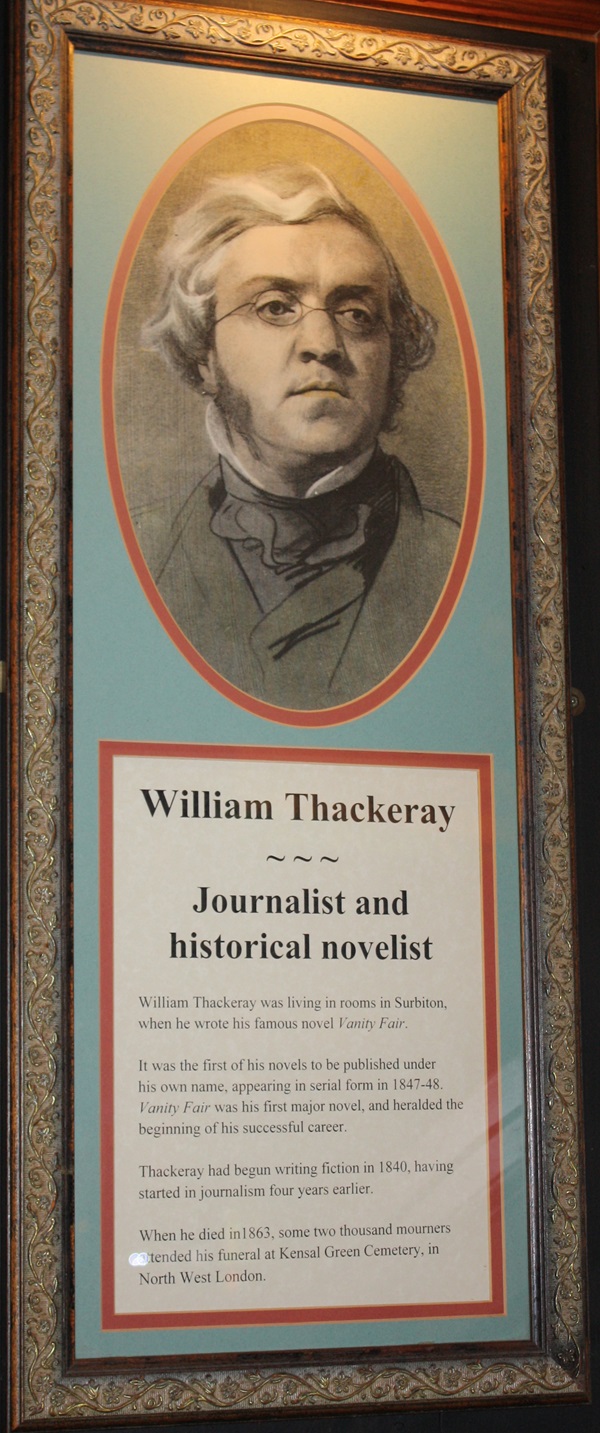
The text reads: William Thackeray was living in rooms in Surbiton, when he wrote his famous novel Vanity Fair.
It was the first of his novels to be published under his own name, appearing in serial form in 1847-48. Vanity Fair was his first major novel, and heralded the beginning of his successful career.
Thackeray had begun writing fiction in 1840, having started in journalism four years earlier.
When he died in1863, some two thousand mourners tended his funeral at Kensal Green Cemetery, in North West London.
A print and text about Railway Station, Surbiton, c1935.
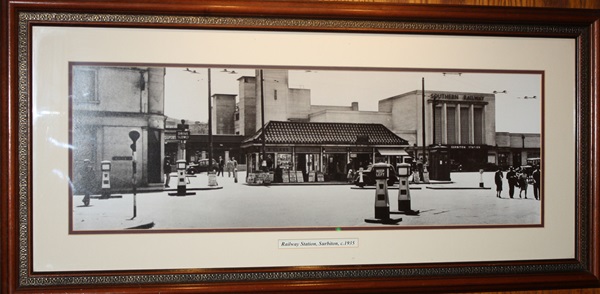
A photograph Railway Station, Surbiton, c1905.
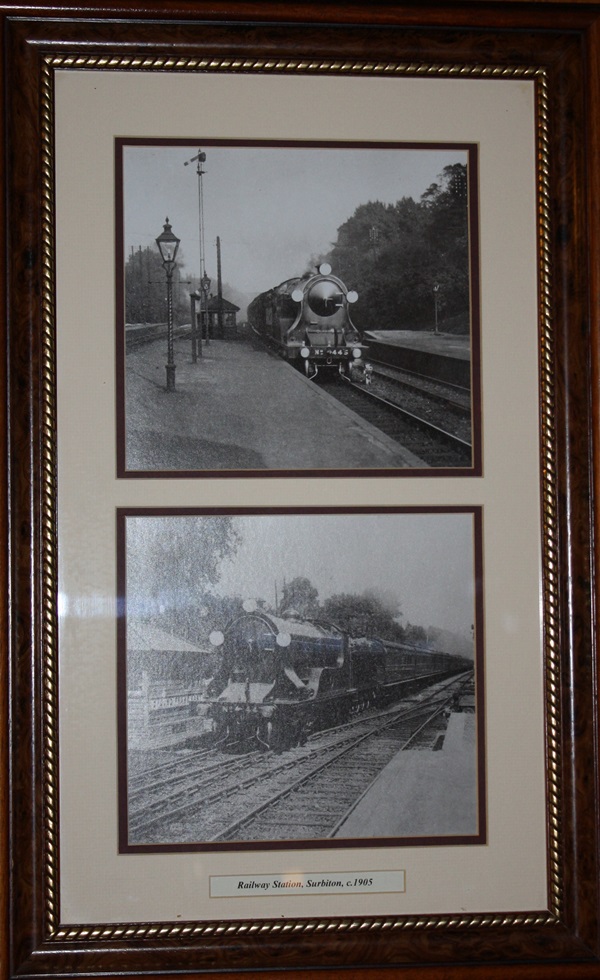
A photograph Railway Station, Surbiton, c1921.
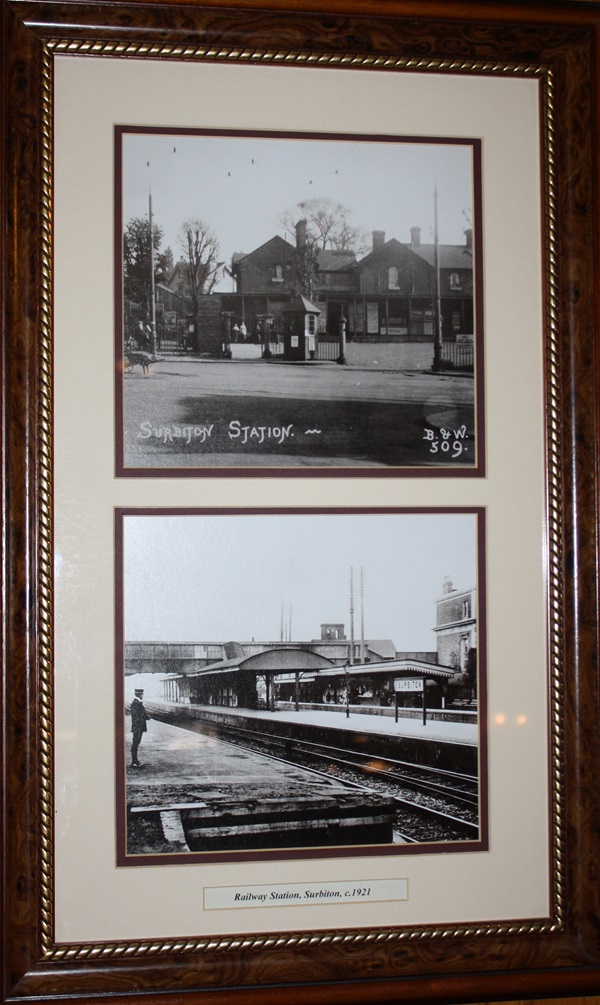
The original beams used when the building was once a cinema, are still visible today.
They run through the front of the pub, and end back of house.
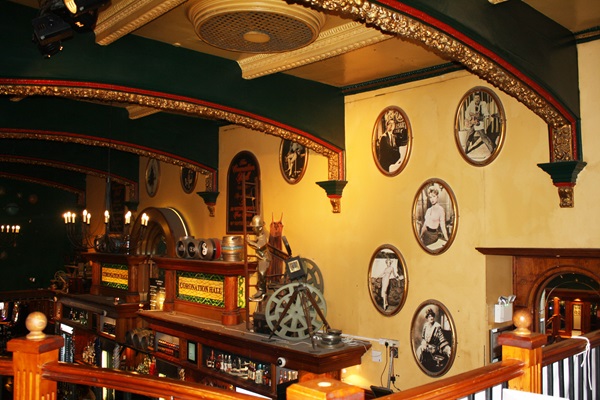

The building used to be home a gentlemen’s club.
A Jacuzzi can be found in the cellar, next to a swimming pool, which has since been filled in.
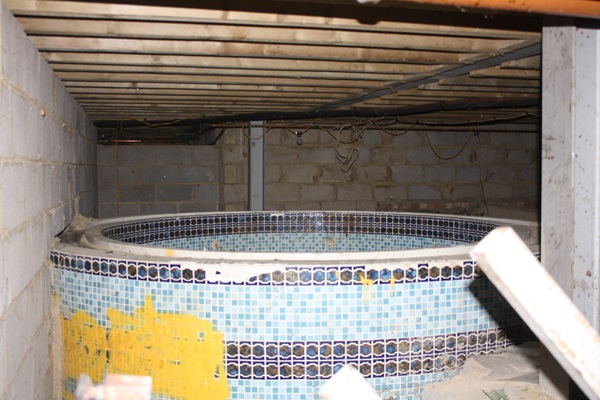
The original stained-glass windows have been kept along the side of the pub.
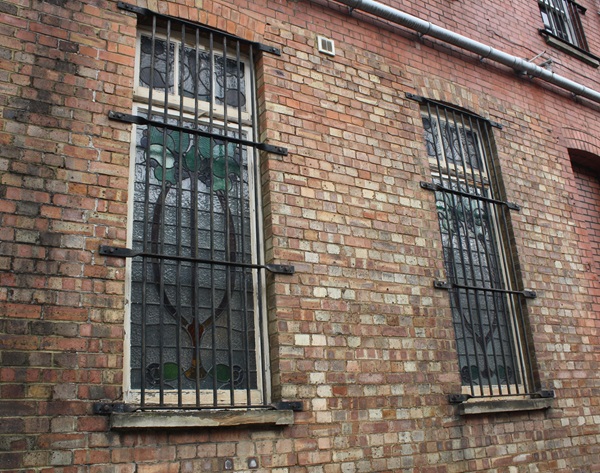
This stained-glass window has been recreated to appear similar to the original window that was once fitted here.
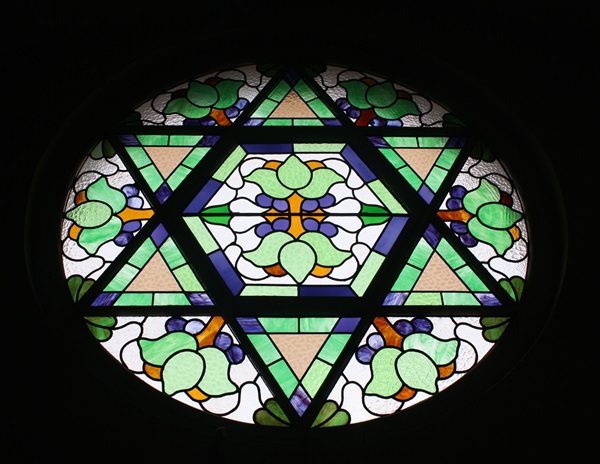
External photograph of the building – main entrance.
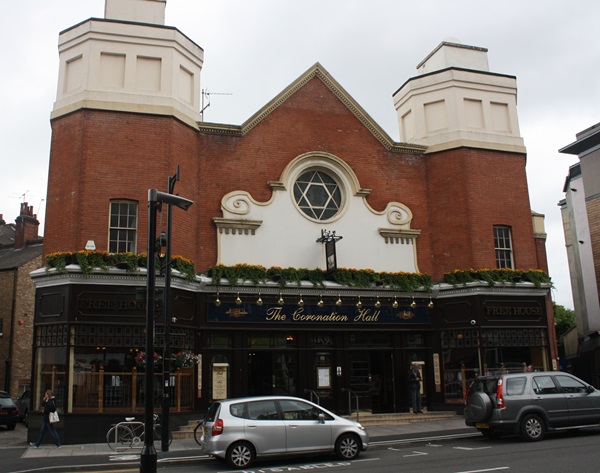
If you have information on the history of this pub, then we’d like you to share it with us. Please e-mail all information to: pubhistories@jdwetherspoon.co.uk